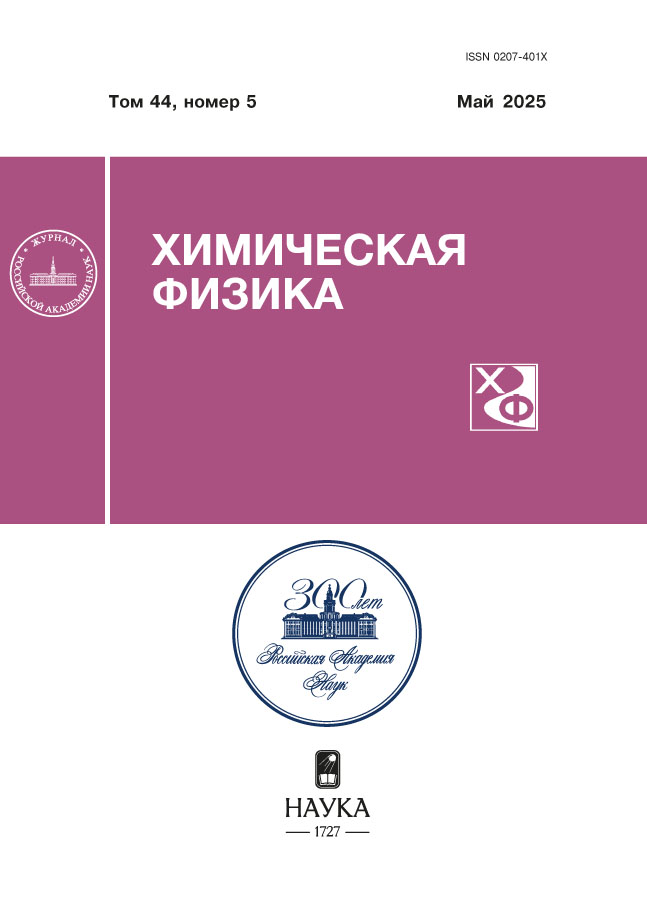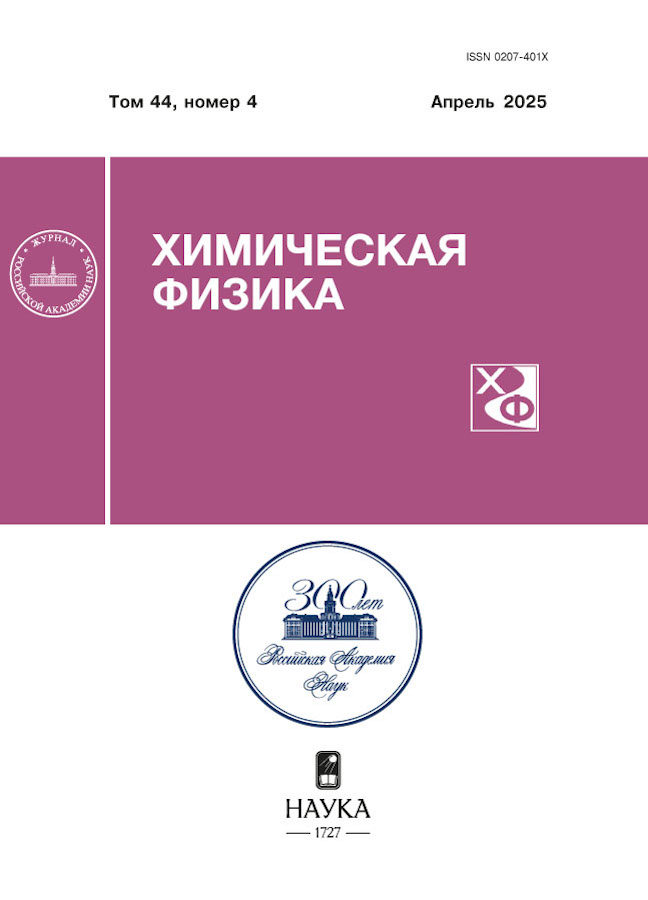Influence of the choice of kinetic mechanism on predicted structure of lean hydrogen–air flames
- Authors: Tereza A.M.1, Agafonov G.L.1, Anderzhanov E.K.1, Betev A.S.1, Khomik S.V.1, Cherepanova T.T.1, Cherepanov A.A.1, Medvedev S.P.1
-
Affiliations:
- Semenov Federal Research Center for Chemical Physics, Russian Academy of Sciences
- Issue: Vol 44, No 4 (2025)
- Pages: 79-87
- Section: Combustion, explosion and shock waves
- URL: https://ta-journal.ru/0207-401X/article/view/682729
- DOI: https://doi.org/10.31857/S0207401X25040097
- ID: 682729
Cite item
Abstract
The influence of the choice of a detailed kinetic mechanism (DKM) on the structure of a laminar flame for lean hydrogen-air mixtures has been studied by means of numerical simulation using a CHEMKIN-Pro software module. It is shown that the choice of three detailed kinetic mechanisms (DKMs), differing in the rate constants of elementary reactions, the number of reaction pathways, and the presence of additional components, has virtually no effect on flame propagation velocity and flame structure. It is found that small differences in the local sensitivity of heat release to elementary reactions can provide reliable information on possible ways of influencing flame propagation.
Full Text
About the authors
A. M. Tereza
Semenov Federal Research Center for Chemical Physics, Russian Academy of Sciences
Author for correspondence.
Email: tereza@chph.ras.ru
Russian Federation, Moscow
G. L. Agafonov
Semenov Federal Research Center for Chemical Physics, Russian Academy of Sciences
Email: tereza@chph.ras.ru
Russian Federation, Moscow
E. K. Anderzhanov
Semenov Federal Research Center for Chemical Physics, Russian Academy of Sciences
Email: tereza@chph.ras.ru
Russian Federation, Moscow
A. S. Betev
Semenov Federal Research Center for Chemical Physics, Russian Academy of Sciences
Email: tereza@chph.ras.ru
Russian Federation, Moscow
S. V. Khomik
Semenov Federal Research Center for Chemical Physics, Russian Academy of Sciences
Email: tereza@chph.ras.ru
Russian Federation, Moscow
T. T. Cherepanova
Semenov Federal Research Center for Chemical Physics, Russian Academy of Sciences
Email: tereza@chph.ras.ru
Russian Federation, Moscow
A. A. Cherepanov
Semenov Federal Research Center for Chemical Physics, Russian Academy of Sciences
Email: tereza@chph.ras.ru
Russian Federation, Moscow
S. P. Medvedev
Semenov Federal Research Center for Chemical Physics, Russian Academy of Sciences
Email: tereza@chph.ras.ru
Russian Federation, Moscow
References
- A.M. Domashenko, A.V. Stepanov. Vesti gazovoj nauki 51(2), 211 (2022).
- S.V. Korobtsev, V.N. Fateev, R.O. Samsonov, S.I. Kozlov. Transport na alternativnom toplive 5, 68 (2008).
- A.A. Abagyan, E.O. Adamov, E.V. Burlakov. Proc. IAEA Conf. (Intern.). Vienna, Austria. 1996. IAEA-J4-TC972. P. 46.
- G. Saji, Nucl. Eng. Des. 307, 64 (2016). http://dx.doi.org/10.1016/j.nucengdes.2016.01.039
- Bentaib, N. Meynet, A. Bleyer. Nucl. Eng. 47(1), 26 (2015). https://doi.org/10.1016/j.net.2014.12.001
- Kirillov, N. Kharitonova, R. Sharafutdinov, N. Krenniikov. Nucl. Rad. Safety J. 2(84), 26 (2017).
- Yakovenko, A. Kiverin, K. Melnikova. Fluids 6(1), 21 (2021). https://doi.org/10.3390/fluids6010021
- I.S. Yakovenko, I.S. Medvedkov, A.D. Kiverin. Russ. J. Phys. Chem. B. 16, 294 (2022). https://doi.org/10.1134/S1990793122020142
- A.M. Tereza, G.L. Agafonov, E.K. Anderzhanov, A.S. Betev, S.P. Medvedev, S.V. Khomik, T.T. Cherepanova. Russ. J. Phys. Chem. B. 17(4), 974 (2023). https://doi.org/10.1134/S1990793123040309
- P. Krivosheyev, Y. Kisel, A. Skilandz, K. Sevrouk, O. Penyazkov, A. Tereza. Int. J. Hydrogen Energy 66, 81 (2024). https://doi.org/10.1016/j.ijhydene.2024.03.363
- D.A. Frank-Kamenetskii. Diffusion and Heat Transfer in Chemical Kinetics. (Plenum, New York, 1969).
- A.A. Azatyan, S.K. Abramov, A.A. Borisov, V.M. Prokopenko. Russ. J. Phys. Chem. A. 86 (3), 355 (2012). https://doi.org/10.1134/S0036024412030053
- A.L. Sanchez, F.A. Williams. Prog. Energy Combust. Sci. 41, 1 (2014). https://doi.org/10.1016/j.pecs.2013.10.002
- A.M. Tereza, G.L. Agafonov, E.K. Anderzhanov et al. Russ. J. Phys. Chem. B. 17 (6), 1294. https://doi.org/10.1134/S1990793123060246
- D.A. Knyazkov, A.G. Shmakov, O.P. Korobeinichev. Combust. Flame 151, 37 (2007). https://doi.org/10.1016/j.combustflame.2007.06.011
- D.A. Knyazkov, V. Shvartsberg, A. Dmitriev et al. Combustion Explosion and Shock Waves 53, 491 (2017). https://doi.org/10.1134/S001050821705001X
- A.G. Shmakov. Doctoral Dissertation in Chemistry. (Voevodsky Inst. of Chemical Kinetics and Combustion, Siberian Branch of the Russian Academy of Sciences, Novosibirsk, 2022).
- A.E. Elyanov, A.I. Gavrikov, V.V. Golub, A.Y. Mikushkin, V.V. Volodin. Process Saf. Environm. Prot. 164, 50 (2022). https://doi.org/10.1016/j.psep.2022.06.007
- D.L. Baulch, C.T. Bowman, C.J. Cobos et al. J. Phys. Chem. Ref. Data. 34(3), 757 (2005). https://doi.org/10.1063/1.1748524
- A.M. Tereza, G.L. Agafonov, E.K. Anderzhanov et al. Russ. J. Phys. Chem. B 16, 686 (2022). https://doi.org/10.1134/S1990793122040297
- Keromnes, W.K. Metcalfe, K.A. Heufer et al. Combust. and Flame 160, 995 (2013). https://doi.10.1016/j.combustflame.2013.01.001
- A.A. Konnov. Combust. and Flame 203, 14 (2019). https://doi.org/10.1016/j.combustflame.2019.01.032
- CHEMKIN-Pro 15112, Reaction Design, San Diego, CK-TUT-10112-1112-UG-1., 2011.
- S.P. Karkach, V.I. Osherov. J. Chem. Phys. 110, 11918 (1999). http://dx.doi.org/10.1063/1.479131
- J.V. Michael, J.W. Sutherland, L.B. Harding et al. // Proc. Combust. Symp. 28, 1471 (2000).
- P.A. Vlasov, V.N. Smirnov, A.M. Tereza. Russ. J. Phys. Chem. B 10, 456 (2016). https://doi.10.1134/S1990793116030283
- S. Medvedev, G. Agafonov, S. Khomik. Acta Astronaut. 126, 150 (2016). https://doi.org/10.1016/j.actaastro.2016.04.019
- A.E. Lutz, R.J. Kee, J.A. Miller. Sandia National Laboratories, Livermore, CA, SAND 87-82481998.
- R.J. Kee, J.F. Grcar, M.D. Smooke, J.A. Miller. Sandia National Laboratories, Livermore, CA, SAND85-8240, 1985.
- V.V. Roenko, A.P. Karmes. Tekhnologia pozharotushenia 3, 15 (2017).
- B.E. Gel’fand, O.M. Popov, B.B. Chaivanov. Hydrogen: Parameters of Combustion and Explosion (Fizmatlit, Moscow, 2008) [In Russian].
Supplementary files














